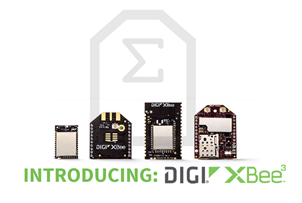The next big thing is IoT connectivity is smaller: Digi Xbee3

As intelligence continues to move out to the edge of IoT networks, the need grows for hardware devices that provide more capabilities, adaptability, security, and extensibility. The next generation of IoT solutions must be able to aggregate and analyse data where it’s captured on a distributed network, and apply specific business rules and logic. And since connectivity is the heart of the IoT, innovation in RF modules and cellular modems is essential to achieving these goals, says Scott Nelson, vice president Products at Digi.
In response, Digi has unveiled the new Digi XBee3 series of next-generation RF modules and cellular modems. These connectivity components feature a smaller size, lower weight, and longer battery life to support greater innovation at the network edge. With Digi XBee3, devices can go smaller, run longer and work smarter in ways that are compact, mobile, and ultra-efficient. Perhaps most importantly, at Digi we make our modules pin-compatible so the host board doesn’t have to be redesigned for a different protocol or frequency.
A smaller footprint
At 13mm x 19 mm (just one-third of the size of the original Digi XBee module), the Digi XBee3 can fit almost anywhere. To maintain full compatibility, it is also available in the original Digi XBee through-hole and surface-mount packages, so if you’ve previously integrated Digi XBee, you can continue to source components that fit your original PCBs. Users can choose between three standard form factors:
- Through-hole for maximum flexibility and third-party socket compatibility
- SMT standard-size for lower cost, greater I/O, and a backwards-compatible footprint
- Micro for lowest size, weight, and cost to support mobility, battery-powered applications, and maximum ROI.
Smarter energy usage
Going small means going mobile, and going mobile usually means relying on a battery – creating more design challenges. Naturally, smaller batteries have less capacity, which can translate into more frequent recharges or replacements. Digi XBee3 provides several options to manage power and ensure that even small batteries can have long lives.
If you’re running on a limited power budget, Digi XBee3 supports an external sleep cycle that a host device can control. An internal cyclic sleep timer is also available for simple sensor applications that wake every few minutes to transmit a new reading and then go back to sleep. And a business-rules engine in MicroPython lets you create programmatic power control for extra, application-specific savings – from a deep sleep that uses almost no energy to lighter sleep modes when faster wake times are required.
Design flexibility
The Digi XBee3 series is initially available in both RF (ZigBee® 3.0, IEEE 802.15.4) and cellular options (Cellular Cat-1). Over the next several months, Digi XBee3 will be software-upgradeable to Bluetooth® LE and will also be available in additional RF protocols (DigiMesh® and Wi-Fi) and two new low power, wide area (LPWA) cellular modems (Cellular LTE-M and Cellular NB-IoT.)
Digi XBee3 supports three different antenna types so that you can choose the right solution for your project. For maximum simplicity, choose an onboard chip antenna that requires no additional components and works great from inside a non-metallic enclosure.
Need greater flexibility in positioning your antenna? A standard U.FL connector supports a broad range of external and specialty antennas – that’s especially useful if your device is housed in a metal box. Finally, if you are creating a PCB trace antenna or simply want an antenna connector someplace else, there’s the RF pad option that enables routing antenna signal to anywhere on your circuit board. Digi XBee3 offers a wide range of alternatives in a tiny package.
With its reduced size, weight, and power consumption, Digi XBee3 series is ideal for compact and battery-powered applications. You can take advantage of multiple levels of programmability including dual-mode radios, MicroPython programmability for both business rules and application logic, and the tools to manage it all. In addition to edge programmability, it offers a low-power microcontroller capable of delivering intelligence at the network edge, and pin-compatibility allows you to switch among a variety of protocols without changing your circuit board.
If you’re looking to move your IoT plans forward faster and build in more intelligence at the edge, and add functional capabilities, Digi’s new line up of modules may merit your careful evaluation.
The author of this blog is Scott Nelson, vice president Products at Digi
Comment on this article below or via Twitter @IoTGN

